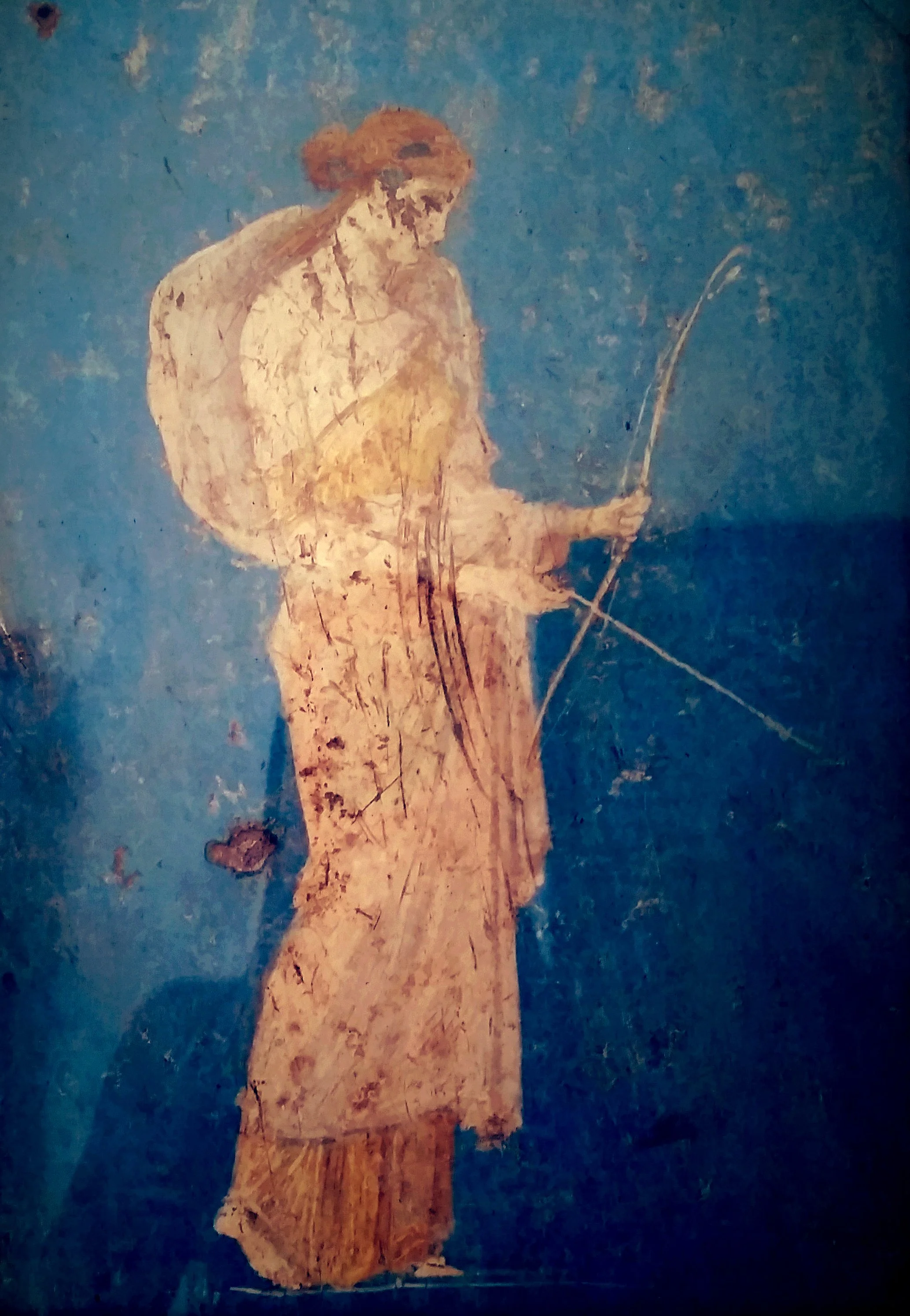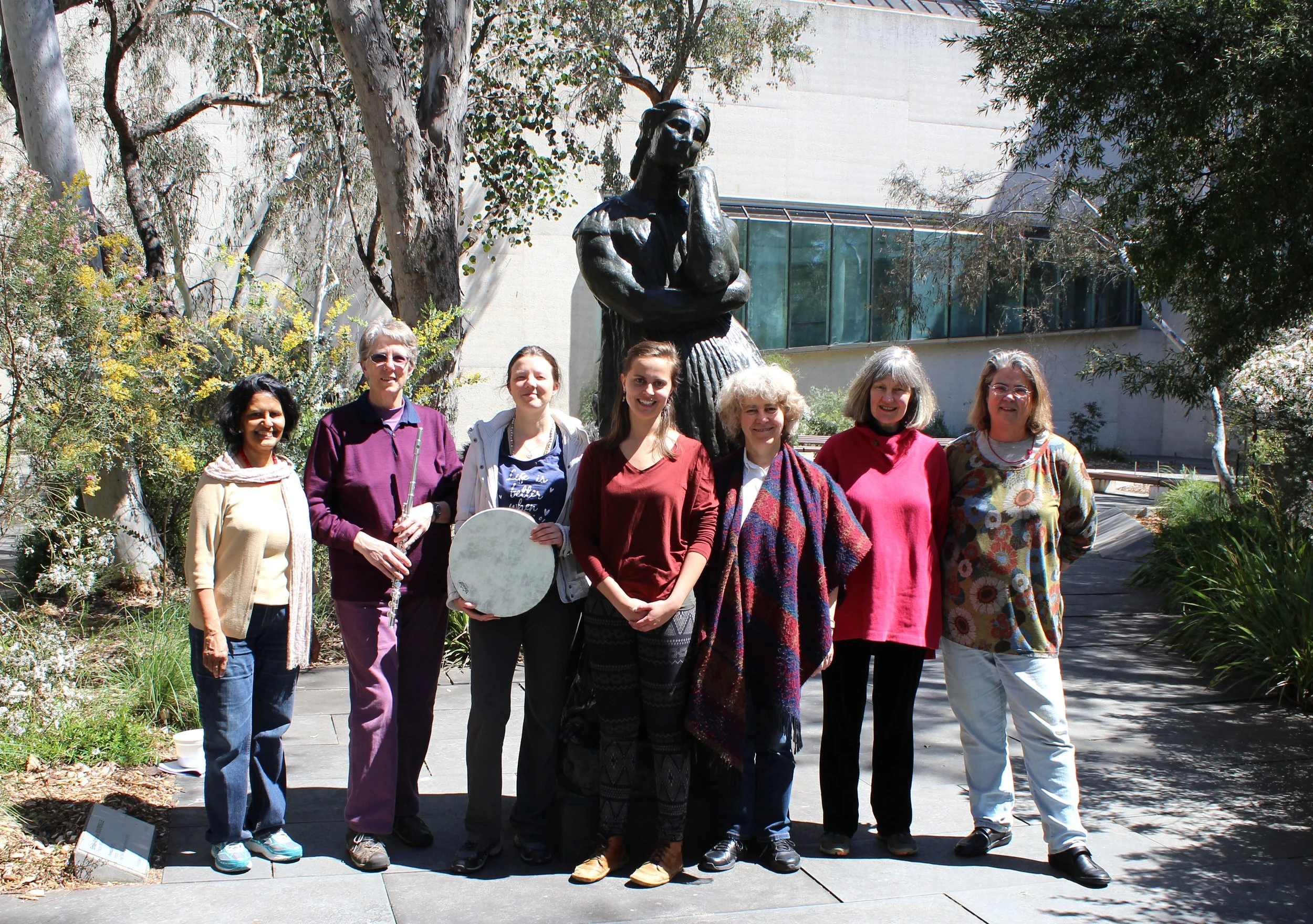Penelope’s Odyssey
We invoke thee, Mother of Memory and Giver of Dreams. Grant us the power of concentration and the strength to remember.
Layne Redmond
Poetry and song stir the radiant spirit of Penelope, wife of Homer’s hero Odysseus. Our travelling performance is inspired by Emile Bourdelle’s mythic figure. We begin in Nakaya’s Fog Sculpture, then approach Penelope and journey to her inner world through a descent into James Turrell’s Skyspace.
National Gallery of Australia, Sculpture Garden

Performance Notes
Written & performed by Miriam Pickard
Glenda Cloughley (cello & voice)
Johanna McBride (voice)
Cassie Schilg (frame drum)
Meg Rigby (flute)
Kaveri Chakrabarty
Music composed by Glenda Cloughley and Mesomedes of Crete (2nd Century CE)
Arranged by Glenda Cloughley and Johanna McBride.
2014
A significant impetus for the creation of this project was the desire to celebrate and cultivate intergenerational relationships between women. Exploring Penelope’s wisdom offers a threshold crossing for sharing wisdom across generations, ancient and present.
Penelope is twenty years old, Queen of Ithica and wife of Homer’s hero, Odysseus. Penelope has just given birth to a son yet laments the departure of her husband and his warriors to war. She will not see him again for twenty years. Some remember Penelope for her stoic fidelity to Odysseus during their years apart. Some say she was a pained and grief-stricken woman paralyzed and isolated on her husband’s island. Others say she passed the time playing the field of male suitors who hung about in her husband’s absence. These simplistic caricatures appear at odds with the wise, principled and radiant depiction of Penelope in Homer’s Odysseyand the generative form of Bourdelle’s sculpture. Why is Penelope’s memory bound in a relentless and tragic cycle, whether it be resolute stoicism, despair and grief or emotional and physical disconnection? When the new cycle is about to turn, change is available to us. Our human odyssey presents each of us with important liminal intersections which can evoke transformative questions that can inspire a re-engagement with our deepest inspirations.
Bourdelle’s Penelope stands within the Parliamentary triangle, the ceremonial precinct of Canberra. Penelope does as the ancient proverb speaks, wisdom takes her stand at the crossroads. This wisdom story unfolds in the shadow of the people’s parliament of Australia. She is listening, observing and longing with the citizens of our National Capital. As a global community, we are faced with such epic and complex issues like global warming, people migration in search of a home in a violent world, and political and religious extremism. It is easy to feel overwhelmed by the foreboding certainties of pain and destruction for our planet and its peoples. How do we respond to the anxiety and despair unleashed by such a scenario? Penelope is patient and observant. Overflowing with longing and lament, considered and bold, hopeful and full of heart. She is a moving force of creativity who restores and awakens our senses towards deeper wisdom.
